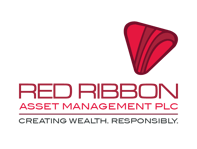There’s Nothing Average about Sustainable Hotel Development
If there’s any such thing as an average Hotel, here’s what it might look like larger franchises will typically have 313.1 rooms (the 0.1 comes in handy for smaller guests), and mid-scale, boutique, and independent operations will generally have 75.2 (www.statista.com). And there’ll almost always be a restaurant (or three), car parking, and a cohort of staff working everywhere from the front desk to the kitchens: busy as a swarm of bees on a summer’s day. Added to this, all or most of those 313.1 and 75.2 rooms (hopefully all) will be occupied by a ceaseless tide of guests, keeping the hotel buzzing busily around the clock. Lighting, water, and heating levels must be carefully calibrated to match this complex flow of travellers, and somewhere, at the heart of it all, someone must run the business…
But, of course, there’s no such thing as an average Hotel: some are small family concerns operating from venerable old houses; some are monolithically built to resemble nothing so much as a concrete bus station (accommodating as many guests, and processing them as quickly as they can); and some (increasingly more) are built on a green sustainability model to meet the sophisticated demands of modern travellers, who are searching more and more for eco-friendly destinations. Just how you go about managing the light, water and heating resources will be largely determined by whether you’re one of those family concerns, a concrete bus station, or an eco-friendly destination.
You get the message: modern hotel operations are structured around an almost uniquely complex ecosystem. Actual bus stations, for example, don’t provide for travellers staying the night, and they don’t require an army of staff to look after them (quite the contrary, if my own experience is anything to go by)
And when it comes to offering eco-friendly destinations, the picture gets even more complicated: because sustainability doesn’t resolve itself around efficient energy management… it doesn’t even start there. Ideally, a green sustainable hotel would be constructed from the ground up with sustainability at its heart, making meaningful environmental engagement part of its underlying DNA.
Better yet, why build new where there is a mass of existing buildings that may be better suited as a hotel rather than an office building or defunct high street retail destinations? As existing buildings will make up to 80% of total real estate assets by 2050 (Net Zero target date)
Building a Green Hotel
Creating a new green, sustainable hotel (or refurbishing one from existing stock) requires a conscious and considered approach to the construction process: striving to ensure a properly circular use of resources capable of resonating throughout the lifetime of the building. Let’s not forget, after all, that when it comes to protecting our Planet’s precious resources, traditional construction is still the number one generator of waste across the globe: all that rusted steelwork, clogged and broken brickwork, and forgotten pipes and cabling, buried under mounds of earth: all of it destined for landfill sites. And the picture gets even worse when the building comes to be demolished (sooner than you might think, given the average hotel (that phrase again) has a viable life that can be as short as thirty years).
Sustainable building has to be circular, ensuring resource reuse and recyclability as part of the process.
That’s why green hotel development is making use of digitisation to streamline collaborative operations and communications (significantly minimising wastage and energy use levels); designing, from the ground up, to optimise overall consumption levels (using management software and information modelling); and also making use of green building materials, like plastic formwork (which is capable of being re-used hundreds of times, unlike its traditional timber counterpart). 3D Printing and Pre-Fabrication are playing their part, as are robotics and automation technologies, which all reduce labour costs and increase production speed and accuracy of production…
By utilising digital technology such as BIM (Building Information Modelling), we can create digital versions (Digital Twins) of our buildings and ‘data-tag’ them with key information, such as operational utility usage. By doing so, you can start defining peak periods and trends and balance your BMS (Building Management Systems) to accommodate these changes. It’s also vital for the circular process not to forget the building phase and to partner with best-in-class construction companies, promote electric vehicles, and better manage staff deployment to minimise pollution and travel during the building -phase.
There’s nothing average about any of that…Green Hotel Development is already building for a better future.
Invest in Red Ribbon Asset Management

Red Ribbon Asset Management (www.redribbon.co) aims to harness the full potential of fast evolving and emerging technologies to meet the needs of global communities as part of a circular economy, fully recognising the compelling demands of planet people and profit.

.jpg)


.jpg?width=150&height=150&name=house-with-wooden-roof-staircase-side%20(1).jpg)


.jpg)
Leave a Reply